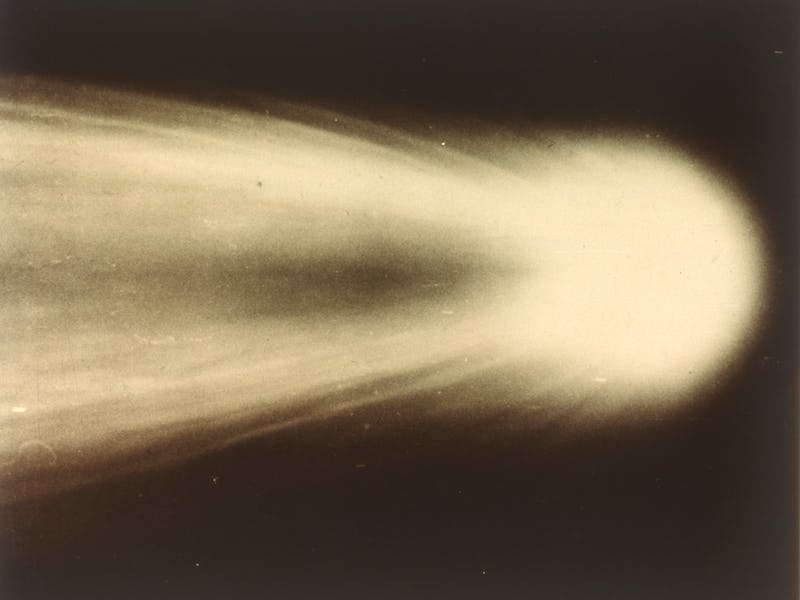Eta Aquarids meteor shower: You need to see the bright embers of Halley's Comet this spring
Starting on April 19 and running through May 28 with a peak on May 5, the spring's favorite meteor shower returns.

If you like meteor showers with glowing streaks, the Eta Aquarids promises a pretty good show. You can catch the peak of this meteor shower on Thursday, May 5, early in the morning.
The best time to head out is in the hours before dawn. If you’re busy or unable to see the sky on the peak date, it is possible to catch a few more meteors between April 19 and May 28, according to NASA, with the best chances being the nights around the peak.
What causes meteor showers?
As the Earth moves through space, it sometimes hits a trail of dust left behind by a comet (an icy snowball) or an asteroid (a space rock). The dust hits our upper atmosphere harmlessly and leaves behind a fiery trail that we call a “shooting star,” or meteor shower.
Comets and asteroids are very small bodies from the dawn of our Solar System. They are highly subject to the gravity of the Sun and also tend to fall apart over time. These two factors mean the small bodies tend to get attracted to the Sun’s gravity, and that the Sun’s gravity will also cause erosion — hence the dusty trails.
The dust trail can shift a little year to year due to the gravities of the Sun, Earth, and mighty Jupiter, but usually, meteor showers happen at fairly predictable times every year.
How old is the Eta Aquarid meteor shower?
Official discovery credit generally goes to English astronomer George Lyon Tupman, who first observed the Eta Aquarids on April 30 and May 2, 1870, according to Sky & Telescope. That said, in 1863 American astronomer Hubert A. Newton disclosed a pattern of historical records suggesting a May meteor shower, with the records dating as far back as 401 CE.
The dust trail comes from a very famous comet called 1P Halley, more generally known as “Halley’s Comet.” Comet Halley is a recurring (or periodic) comet that comes through the inner Solar System every 76 years. Its last appearance was in 1986 and it will next come close to us in 2061, NASA says.
While Comet Halley was first disclosed as a periodic comet in 1705 by Edmund Halley, observations have been seen recorded over millennia. The comet is part of the Bayeux tapestry, which records the Battle of Hastings (associated with the Norman Conquest of England) in 1066.
Images of Eta Aquarid meteors taken at Yosemite National Park.
How to see the Eta Aquarid meteor shower
The “radiant” of the shower, meaning where the meteors appear to come from, is the constellation Aquarius. The constellation is the standard set of stars associated with the International Astronomical Association’s naming of celestial objects, but you may have a different name for that sky region depending on your culture.
Aquarius is hard to spot, but you can use the “square” in the constellation Pegasus to guide you towards Aquarius, according to EarthSky. The constellation is visible in the northern and southern hemispheres, but rides a little higher in the sky in the south. Luckily, you don’t have to get the radiant exactly right. You’ll have a better chance of seeing good meteors if you look slightly away, to get the streakers.
Speaking of streakers, the meteors have a higher-than-average speed of 148,000 mph (66 km/s), NASA says. Eta Aquarids thus often have a bright glow as they crash into the atmosphere at higher speed.
To catch the show, head outside around 2 a.m. local time and get as far away from lights as you can. Give your eyes at least 20 minutes to adjust to the darkness. No binoculars or telescopes are necessary, but you will need to protect your “night vision” from any flashlights or phones. Make sure all lighting devices have red paper or tape on them.
Eta Aquarid meteor shower 2022 prediction
The Moon is usually the biggest factor in figuring out how good a meteor shower will be, as the light from a Full Moon can wash out fainter meteors. Luckly, the Moon is in a waning crescent phase. So you should be able to see the show, but only expect 10 meteors an hour.
While you won’t see many meteors, NASA says the Eta Aquarids present a unique path in the northern hemisphere. Due to the angle at which the dust hits the Earth, many Eta Aquarids look like “earthgrazers.” As the name implies, these types of meteors skim the horizon and tend to be long and bright.
When is the next meteor shower in 2022?
The next meteor shower will be the Delta Aquarids, which are expected to peak around Friday, July 29. But if you can wait a few more weeks, the Perseids will come around on August 11-12. The Perseids are one of the best shows of the year, so make sure to schedule some time to watch them.